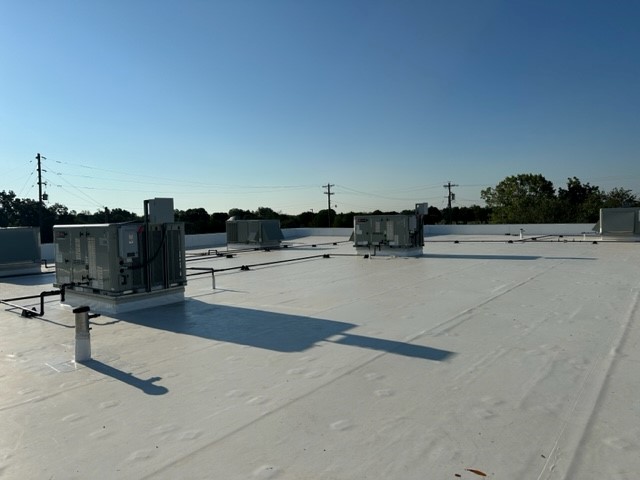Managing a commercial property comes with a long list of responsibilities—and one of the most important is maintaining the building’s flat roof. Flat roofing systems are common in commercial buildings due to their practicality, accessibility, and cost-effectiveness. However, without regular upkeep, even the most well-installed flat roof can develop problems that affect your tenants, operations, and bottom line.
At M&R Roofing and Construction, we specialize in commercial roofing and know what it takes to keep flat roofs performing their best. Here are key flat roof maintenance tips every property manager should follow.
1. Schedule Regular Roof Inspections
Routine inspections are critical to catching small issues before they turn into costly repairs. We recommend professional inspections at least twice a year—ideally in the spring and fall—and after severe weather events. Inspections should look for:
-
Ponding water
-
Membrane cracks or blisters
-
Flashing damage
-
Clogged drains
-
Seams or edges pulling apart
Keeping an inspection log helps track the roof’s condition and plan ahead for repairs or replacement.
2. Clear Debris Promptly
Leaves, branches, trash, and other debris often accumulate on flat roofs, especially near drains and scuppers. Left unchecked, this debris can clog drainage systems, cause ponding water, and accelerate membrane deterioration. Make debris removal part of your regular maintenance routine.
3. Keep Drainage Systems Flowing
Flat roofs rely heavily on efficient drainage to prevent water from pooling and damaging the roof. Ensure that:
-
Gutters, downspouts, and internal drains are free of blockages
-
Drain covers are in place and secured
-
There are no signs of algae, mold, or plant growth
Poor drainage can reduce the life of your roofing system and increase liability if leaks occur.
4. Monitor for Ponding Water
Water that sits on a flat roof for more than 48 hours is known as ponding water. It adds unnecessary weight and causes long-term damage to the roof’s structure and membrane. If you notice persistent ponding, call a professional to assess whether re-sloping or added drainage is needed.
5. Limit Roof Access
Only allow authorized personnel or contractors on the roof. Excessive foot traffic can wear down the membrane or cause accidental damage. If access is necessary (for HVAC or equipment), ensure walk pads are installed to reduce wear and tear.
6. Watch for Signs of Interior Leaks
Interior water stains, bubbling paint, or musty smells can indicate a roof problem. Stay in communication with tenants or building staff, and investigate any reports of leaks or damp areas quickly to prevent further structural or mold-related issues.
7. Act Fast on Minor Repairs
Small cracks, blisters, or membrane separations can often be fixed quickly and affordably—if caught early. Waiting too long can result in more serious problems that require major repairs or full roof replacement.
8. Work with a Trusted Commercial Roofing Partner
Partnering with a professional commercial roofing contractor like M&R Roofing and Construction ensures that your flat roof is in expert hands. Our team offers:
-
Routine maintenance plans
-
Professional inspections
-
Leak detection and repair
-
Emergency roofing services
-
Complete flat roof replacements
We help you stay ahead of costly issues and protect your property investment.
Protect Your Roof, Protect Your Property
Flat roofs require proactive care to stay reliable and leak-free. As a property manager, staying ahead of maintenance helps you avoid disruptions, reduce repair costs, and extend the life of your commercial roofing system.
Ready to schedule a flat roof inspection or get help with commercial roof maintenance?
Contact M&R Roofing and Construction today or visit our website to request service.

